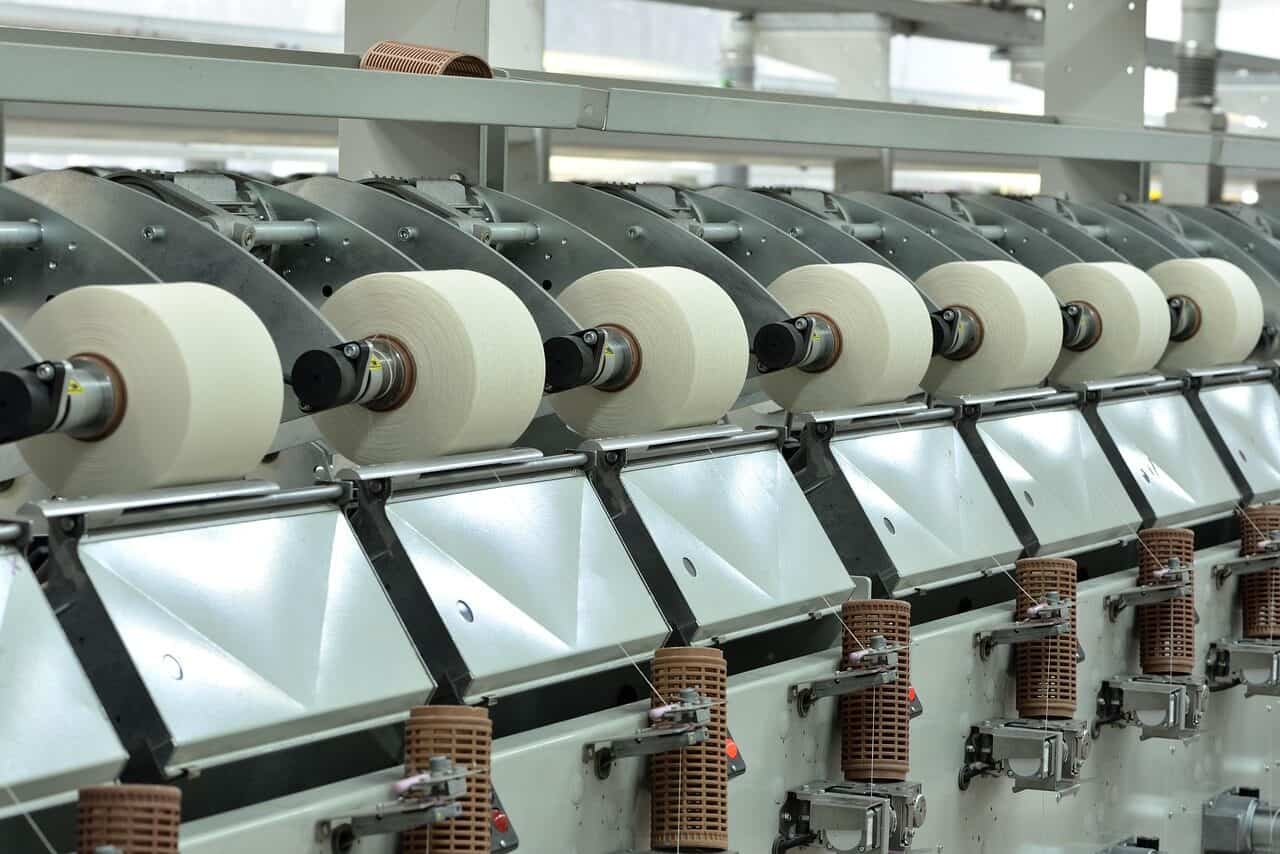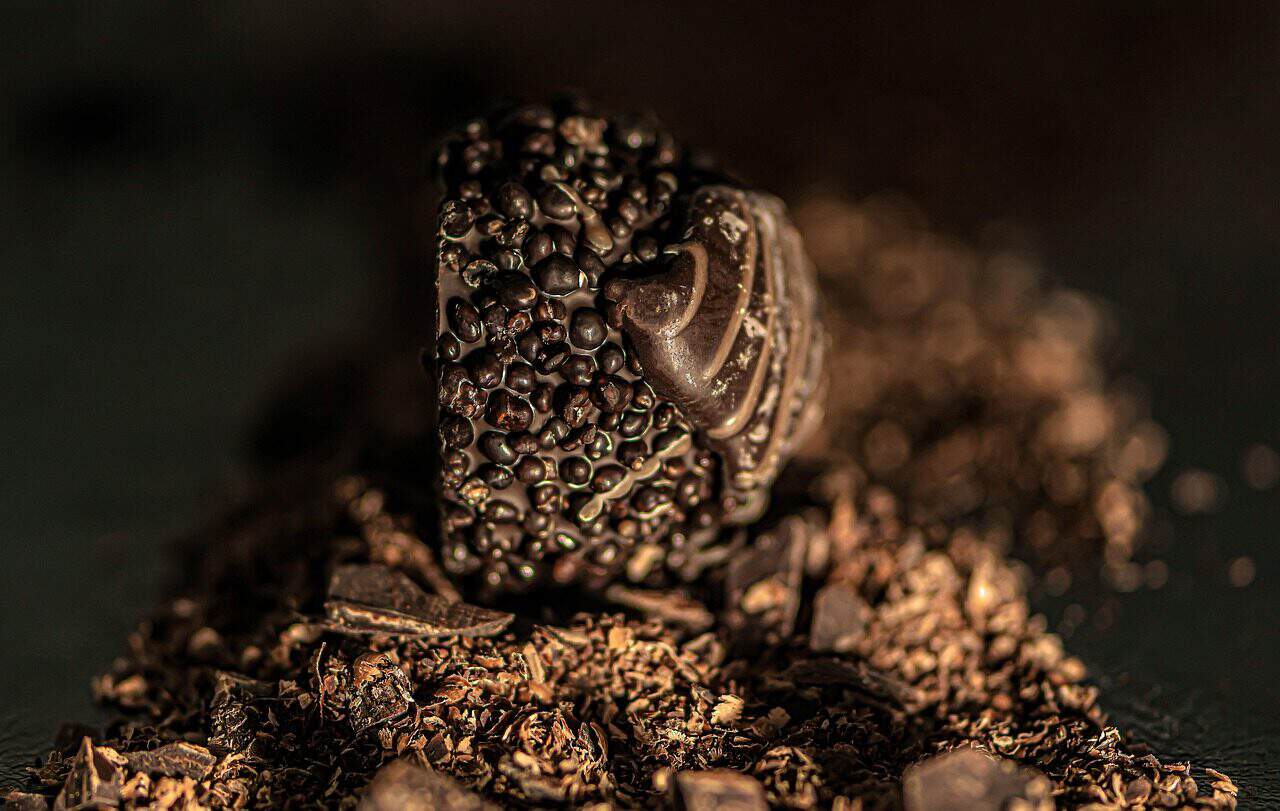La superficie de las galletas varía de color debido a cambios físicos y químicos. Una vez eliminada la humedad de la masa, la temperatura de la superficie aumenta rápidamente. Cuando la superficie alcanza unos 150 ºC, el color cambia. En masa se somete entonces a un proceso La caramelización es una reacción no enzimática de oscurecimiento. Es la descomposición de los azúcares a altas temperaturas lo que provoca el desarrollo del color y el sabor.
Pan con levadura química
En una fábrica se utilizan productos químicos para crear masas de consistencia uniforme. A continuación, estas masas se extienden y se pasan por un serie de rodillos para crear un contorno. A continuación, los rodillos de presión o de gofrado cortan la forma deseada en la lámina. La masa sobrante se retira para volver a procesarla. Los diseños pueden imprimirse en los trozos de masa utilizando pasadores de acoplamiento. Los pasadores ayudan a evitar el exceso de burbujas de gas mientras el filo de corte penetra en la masa.
Los productos químicos utilizados para la levadura química pueden venir en una variedad de formas y se pueden comprar en la tienda de comestibles o en línea. El polvo de hornear es un ejemplo de un tipo de levadura química. Por lo general, se compone de bicarbonato de sodio y crema de tártaro. Estos compuestos son de acción extremadamente rápida y comienzan a reaccionar con el líquido tan pronto como se mezclan con los ingredientes secos. Esto permite preparar un pan rápido.
Aunque este ingrediente se descubrió por primera vez en 1959, no fue hasta la década de 1980 cuando los panaderos comenzaron a conocerlo. Los cristales de color amarillo brillante que produce ACA se descomponen en semicarbazida y uretano. El primero se considera un carcinógeno humano, mientras que el segundo no ha demostrado ser dañino para los humanos. Este último, sin embargo, se ha relacionado con el asma entre los trabajadores de las fábricas.
La principal diferencia entre el pan con levadura química y los panes tradicionales radica en cómo funcionan los dos procesos. Los agentes de levadura química suelen ser más efectivos que la levadura, ya que proporcionan un aumento más rápido y un tiempo de preparación más corto. También proporcionan una mejor liberación de CO2 durante el horneado, lo cual es esencial para una estructura de miga y bolsas de aire exitosas. Estos factores finalmente afectan el sabor, el color y la textura del pan.
En el pan industrial, la levadura se mezcla con un líquido. Este líquido contiene tanto un gas como un líquido. La levadura luego convertirá el azúcar invertido en dextrosa, que es la forma preferida para el pan. También se utilizan otros agentes leudantes, incluido el bicarbonato de potasio. Este modelo requiere el conocimiento de los coeficientes de interacción de Pitzer. Roy et al. (2004) publicó un estudio sobre este tema.
El papel de los agentes en el pan leudado químicamente es controvertido. Se cuestiona la eficacia del bicarbonato de amonio como agente leudante. Además, la baja proporción de NH3 en la fase gaseosa hace que el gas amoniaco escape del galletas y dejar el horneado pan con manchas negras o marrones. Un escéptico puede cuestionar la eficacia de este modelo, pero el resultado final es el mismo.
Un pan leudado químicamente es un producto de una agente leudante. El agente leudante mejorado está recubierto de una capa lipídica. Esta capa lipídica protege al agente leudante químico del agua y la hidratación antes de la cocción. Sin embargo, no impide que el pan suba como resultado de este recubrimiento. Un pan leudado químicamente contiene una alta concentración de levadura.
La técnica de recubrimiento de lecho fluido de la técnica anterior proporciona un recubrimiento sustancialmente continuo. Sin embargo, el recubrimiento contiene un alto porcentaje de agente leudante y sólo un porcentaje mínimo de agente de recubrimiento. Además, la técnica de recubrimiento anterior da lugar a una mancha marrón en el producto horneado. producto. Este recubrimiento es demasiado protector y hace que el pan se desmenuce demasiado. Este recubrimiento es un compromiso entre seguridad y sabor. Al final, el producto final está leudado químicamente y no es apto para el consumo humano.





